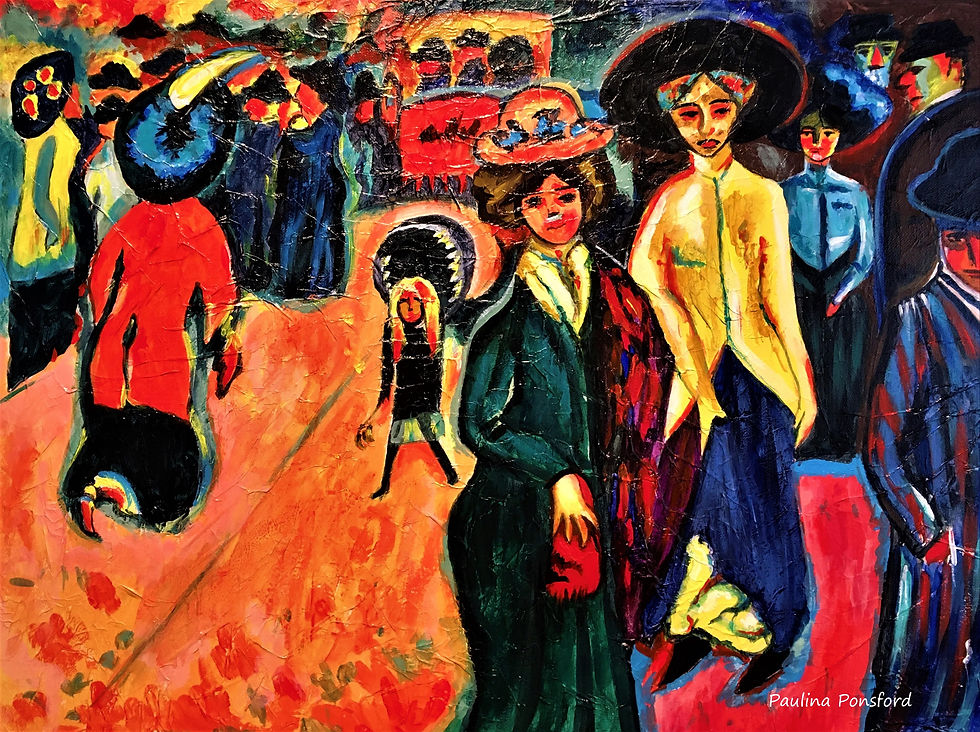Where the streets have no name
- Paulina Ponsford
- Aug 27, 2021
- 2 min read

The Street - by Paulina Ponsford (inspired by Ernst Ludwig Kirchner)
"The Goal of my work has always been to dissolve myself completely into the sensations of the surroundings..."
Ernst Ludwig Kirchner
Crowded city streets were a favorite subject for the early impressionist painters group Die Brückle (The Bridge) in Germany, who wanted to break away from academic tradition. Kirchner, along with other architecture students, formed the group in 1905; from that moment on, Kirchner abandoned his architecture studies and committed himself to art. The Bridge -a key group leading the foundation of Expressionism in the 20th century - aimed to break from academic style and find a new way of artistic expression, which would bridge the old with the new.
In his iconic painting The Street, Kirchner portrays the anxiety and isolation he felt amid city life. It reflects what he called "agonizing restlessness" - a defining quality of many Expressionist paintings.
Kirchner's feelings increased when he moved from Dresden to Berlin in 1911. He painted several street scenes that expressed the profound isolation he felt in the big anonymous city.
In 1918, he suffered a breakdown and moved to a farmhouse in Switzerland; at this time, he painted more peaceful landscapes. In 1937, the Nazi party declared Kirchner's work as degenerate and removed all his paintings from public collections. Sadly, a year later, Kirchner took his own life.
The first time I saw The Street, last year during quarantine, I felt a sense of joy and excitement; the bright and bold complementary colors playing together, the vibrancy and movement of the crowd, and the feel of a busy street. The world had been in lockdown for some months, and I only left my house once a week to get groceries; I missed being part of a scene like the one portrayed in this painting, something we had taken for granted before.
Painting The Street was a cathartic process for me; it gave me a sense of hope and renewal. I was in awe as I discovered the people, the brushstrokes, and the exciting colors! Thank you, Kirchner, for being my teacher during these difficult times; you still touch us today with your art and beauty.

Comments